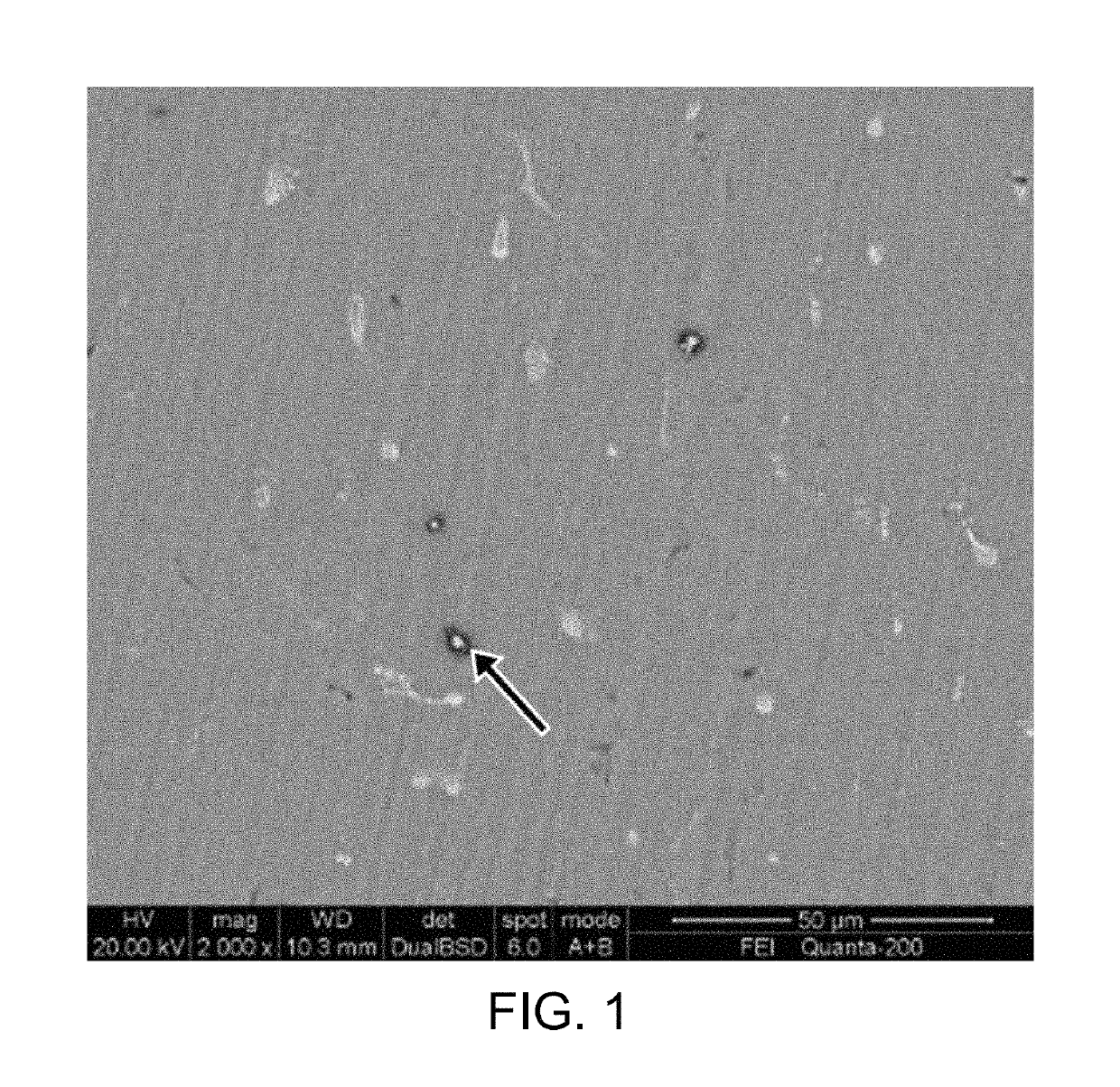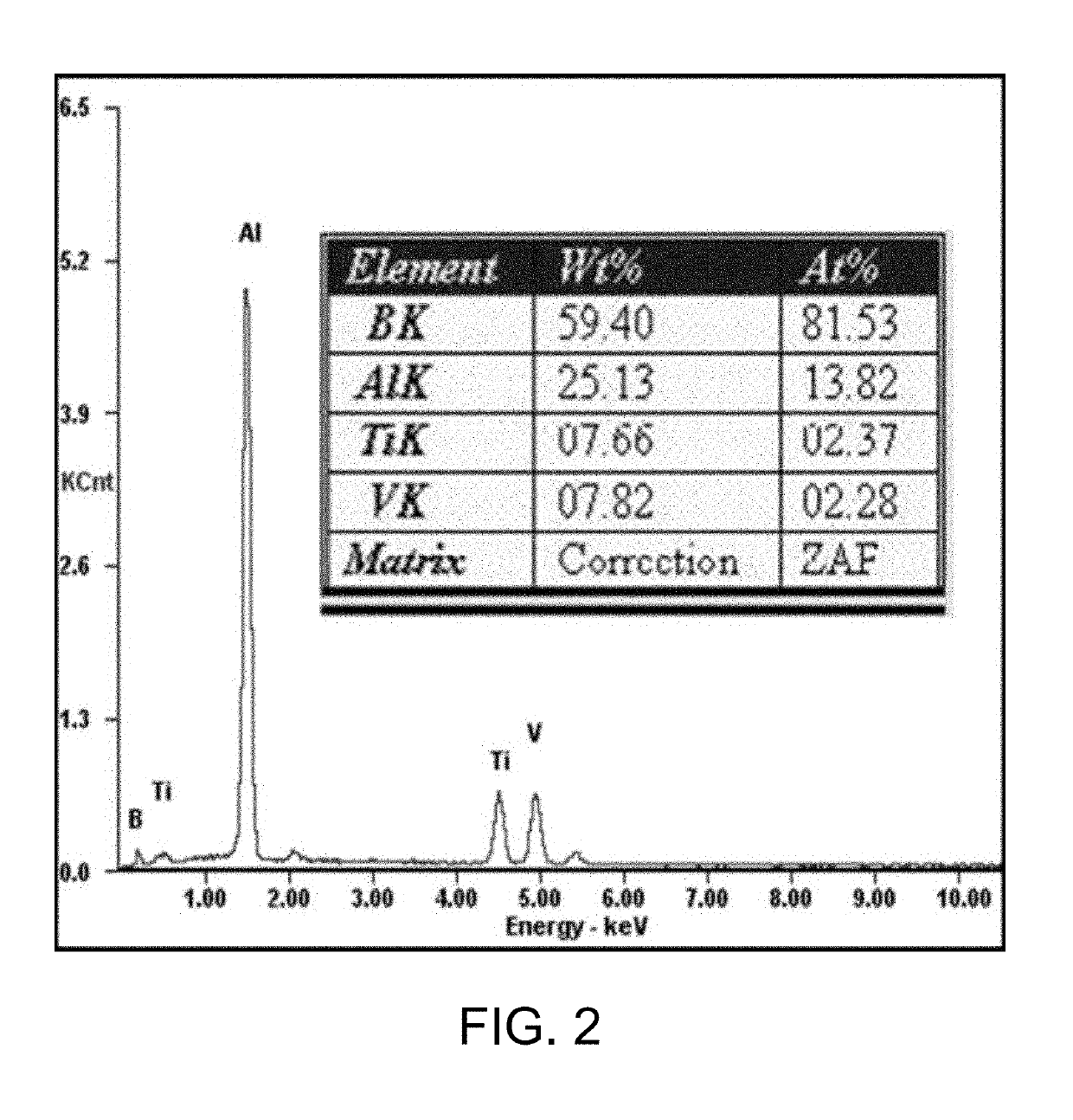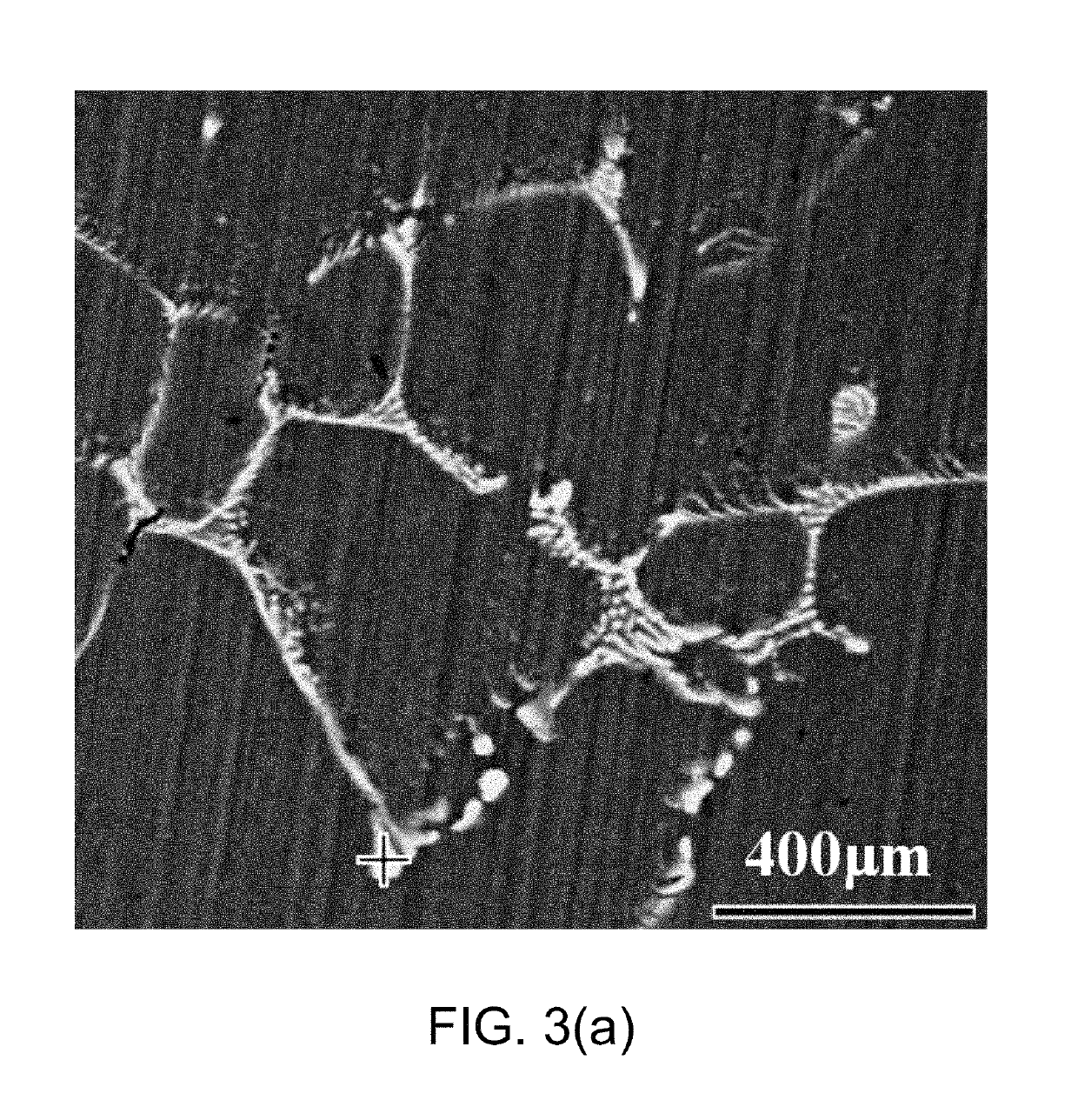Lightweight, high-conductivity, heat-resistant, and iron-containing aluminum wire, and preparation process thereof
a technology of aluminum wire and high conductivity, which is applied in the field of aluminum wire, high-conductivity, heat-resistant, and iron-containing aluminum wire, can solve the problems of high specific strength, high line loss, adverse electrical conductivity, etc., and achieve the reduction of metal electrical conductivity, shorten the mean free path of free electrons, and reduce the effect of material electrical conductivity
- Summary
- Abstract
- Description
- Claims
- Application Information
AI Technical Summary
Benefits of technology
Problems solved by technology
Method used
Image
Examples
embodiment 1
[0062
[0063]An industrial pure aluminum ingot with purity higher than 99.7%, an Al-2.5% B intermediate alloy, an Al-11.34% Zr intermediate alloy, an Al-31.48% La intermediate alloy, and an Al-9.33% Fe intermediate alloy are used as raw materials; the industrial pure aluminum is first melt at 760° C.; then the aluminum-boron intermediate alloy, the aluminum-zirconium intermediate alloy, the aluminum-lanthanum intermediate alloy, and the aluminum-iron intermediate alloy are added; and percentages by weight of the elements are made to be: 0.04 wt. % for boron, 0.10 wt. % for zirconium, 0.09 wt. % for lanthanum, and 0.10 wt. % for iron. After the intermediate alloys are completely melt, a temperature of the melt is decreased to 740° C. and thermal insulation is performed. A supersaturated solid-dissolved aluminum alloy cast blank is then obtained by stirring, refining, furnace front component rapid analysis, component adjustment, standing, and deslagging, as well as rapid cooling casting...
embodiment 2
[0065
[0066]An industrial pure aluminum ingot with purity higher than 99.7%, an Al-2.5% B intermediate alloy, an Al-11.34% Zr intermediate alloy, an Al-31.48% La intermediate alloy, and an Al-9.33% Fe intermediate alloy are used as raw materials; the industrial pure aluminum is first melt at 760° C.; then the aluminum-boron intermediate alloy, the aluminum-zirconium intermediate alloy, the aluminum-lanthanum intermediate alloy, and the aluminum-iron intermediate alloy are added; and percentages by weight of the elements are made to be: 0.07 wt. % for boron, 0.15 wt. % for zirconium, 0.19 wt. % for lanthanum, and 0.20 wt. % for iron. After the intermediate alloys are completely melt, a temperature of the melt is decreased to 740° C. and thermal insulation is performed. A supersaturated solid-dissolved aluminum alloy cast blank is then obtained by stirring, refining, furnace front component rapid analysis, component adjustment, standing, and deslagging, as well as rapid cooling casting...
embodiment 3
[0068
[0069]An industrial pure aluminum ingot with purity higher than 99.7%, an Al-2.5% B intermediate alloy, an Al-11.34% Zr intermediate alloy, an Al-31.48% La intermediate alloy, and an Al-9.33% Fe intermediate alloy are used as raw materials; the industrial pure aluminum is first melt at 760° C.; then the aluminum-boron intermediate alloy, the aluminum-zirconium intermediate alloy, the aluminum-lanthanum intermediate alloy, and the aluminum-iron intermediate alloy are added; and percentages by weight of the elements are made to be: 0.095 wt. % for boron, 0.15 wt. % for zirconium, 0.29 wt. % for lanthanum, and 0.20 wt. % for iron. After the intermediate alloys are completely melt, a temperature of the melt is decreased to 740° C. and thermal insulation is performed. A supersaturated solid-dissolved aluminum alloy cast blank is then obtained by stirring, refining, furnace front component rapid analysis, component adjustment, standing, and deslagging, as well as rapid cooling castin...
PUM
| Property | Measurement | Unit |
|---|---|---|
| temperature | aaaaa | aaaaa |
| tensile strength | aaaaa | aaaaa |
| heat-resistance temperature | aaaaa | aaaaa |
Abstract
Description
Claims
Application Information
 Login to View More
Login to View More - R&D
- Intellectual Property
- Life Sciences
- Materials
- Tech Scout
- Unparalleled Data Quality
- Higher Quality Content
- 60% Fewer Hallucinations
Browse by: Latest US Patents, China's latest patents, Technical Efficacy Thesaurus, Application Domain, Technology Topic, Popular Technical Reports.
© 2025 PatSnap. All rights reserved.Legal|Privacy policy|Modern Slavery Act Transparency Statement|Sitemap|About US| Contact US: help@patsnap.com



